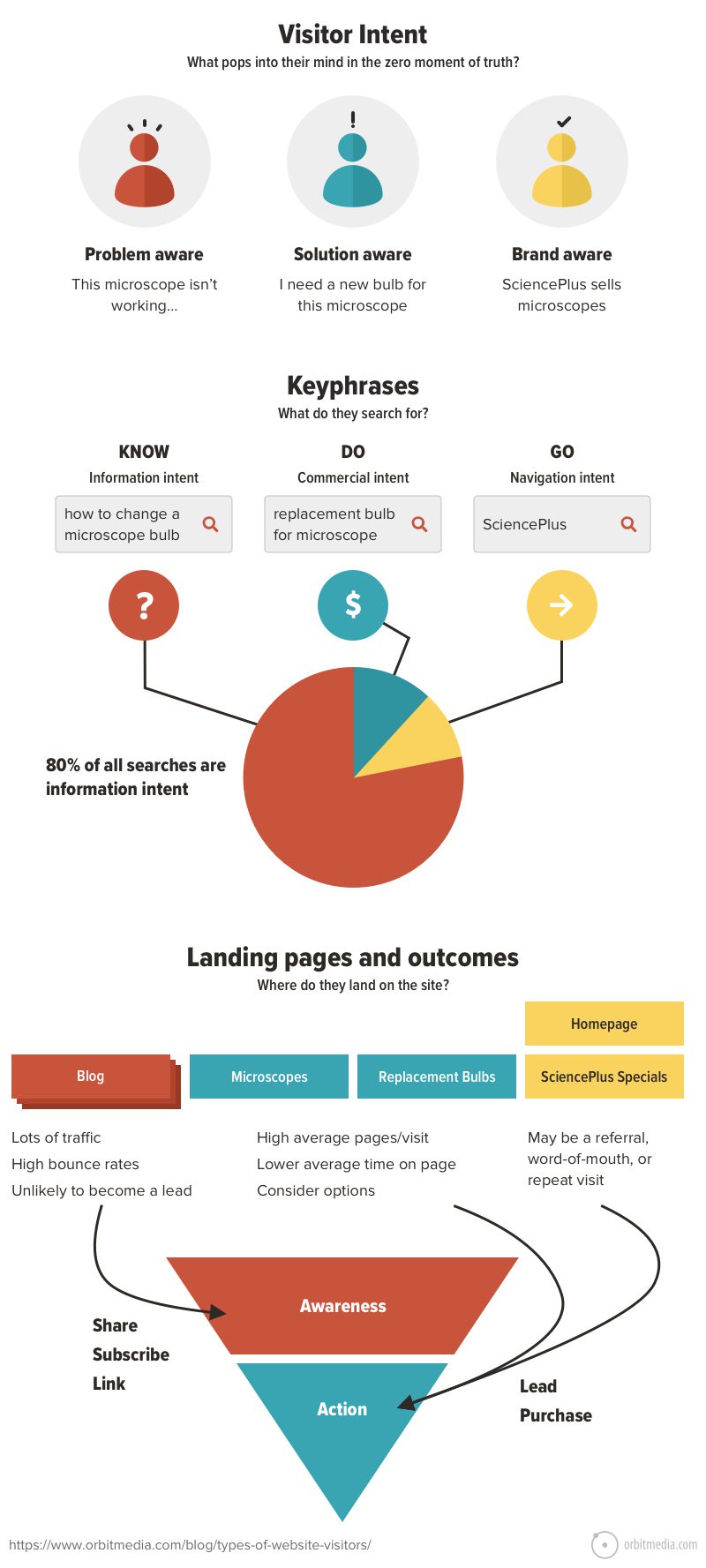AppliMarkets: Your Go-To Resource for App Insights
Explore the latest trends, reviews, and tips in mobile applications.
Search Intent: What Your Visitors Really Want
Unlock the secrets of search intent and discover what your visitors truly crave. Transform your content and boost engagement today!
Understanding Search Intent: Unlocking the Key to Your Audience's Needs
Understanding search intent is crucial for creating content that resonates with your audience. Search intent refers to the purpose behind a user's online query, which can vary widely from informational to transactional. By analyzing the different types of search intents—transactional, informational, navigational, and commercial—you can tailor your content to meet the specific needs of your audience. For instance, if a user searches for 'best running shoes,' they are likely looking for recommendations and comparisons, indicating a transactional intent that should be addressed through product reviews and comparisons.
To effectively unlock the key to your audience's needs, consider leveraging tools such as Google Search Console and keyword planning resources. These tools can help you identify trending keywords and common queries related to your niche. Additionally, using techniques like topic clustering can aid in organizing your content around specific intents, ensuring that you cover a wide range of related topics. By prioritizing search intent in your content strategy, you can enhance user experience, improve your site’s SEO ranking, and ultimately drive more organic traffic to your blog.

The Different Types of Search Intent: How to Tailor Your Content Strategically
Understanding the different types of search intent is crucial for creating content that aligns with what users are truly looking for. Generally, search intent can be categorized into four main types: informational, navigational, transactional, and commercial investigation. Each type reflects a unique stage in the user journey:
- Informational: Users seek answers to specific questions.
- Navigational: Users are trying to reach a particular website.
- Transactional: Users are ready to make a purchase or complete a conversion.
- Commercial Investigation: Users are comparing products or services before making a buying decision.
To tailor your content strategically for each type of search intent, it is important to conduct thorough keyword research and understand what your audience is searching for. For informational queries, focus on creating comprehensive guides and FAQs that provide valuable insights, while for transactional queries, emphasize product descriptions and clear call-to-action buttons. Additionally, leveraging commercial investigation intent can involve crafting comparisons and detailed reviews to help users make informed decisions. By aligning your content with the underlying search intent, you can significantly enhance user satisfaction and improve your website's SEO performance.
Are You Meeting User Expectations? Evaluating Search Intent for Better Engagement
Understanding user expectations is crucial for delivering content that resonates with your audience. Evaluating search intent helps in identifying what users are looking for when they type specific queries into search engines. This involves analyzing keywords, understanding the context of their searches, and recognizing the problems they aim to solve. By aligning your content with the intent behind users' searches, you can improve engagement, increase dwell time, and ultimately enhance the overall user experience.
To effectively evaluate search intent, consider categorizing it into four primary types: informational, navigational, transactional, and commercial investigation. Each category represents distinct user needs and expectations. For instance, someone searching for 'how to improve SEO' is likely seeking informational content, while another querying 'buy running shoes online' is demonstrating transactional intent. By creating content that meets these specific needs, you can increase visibility and foster deeper connections with your audience, thereby ensuring you are indeed meeting user expectations.